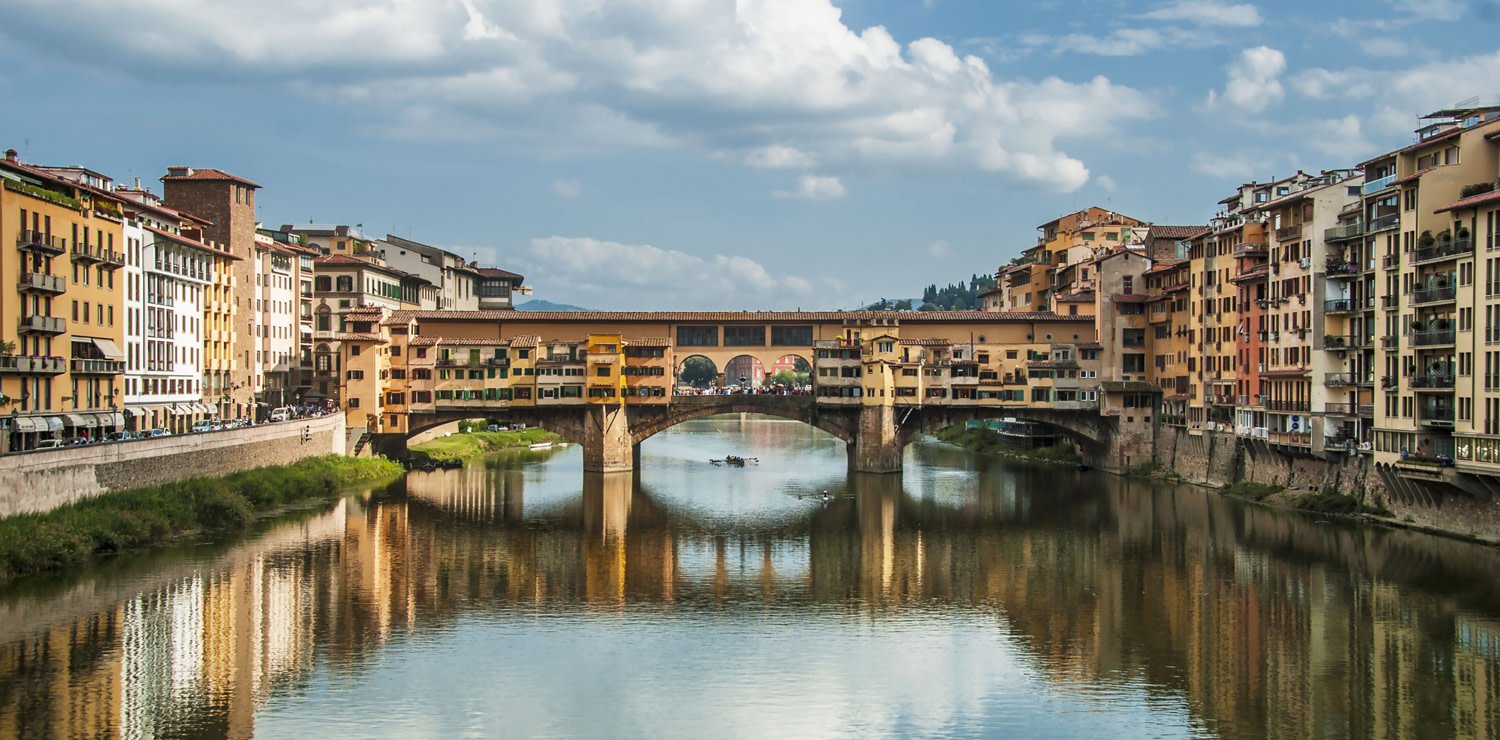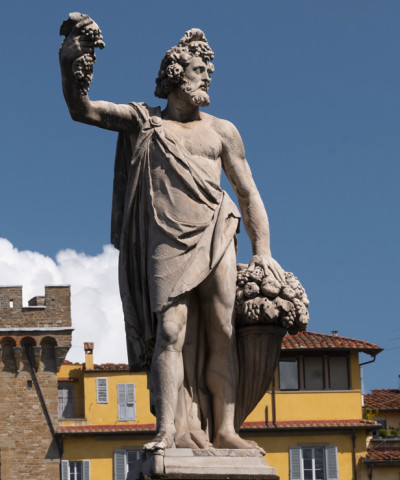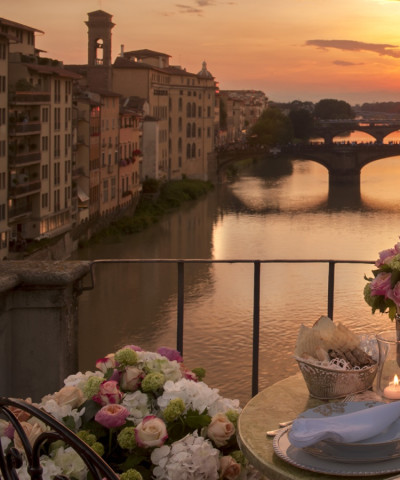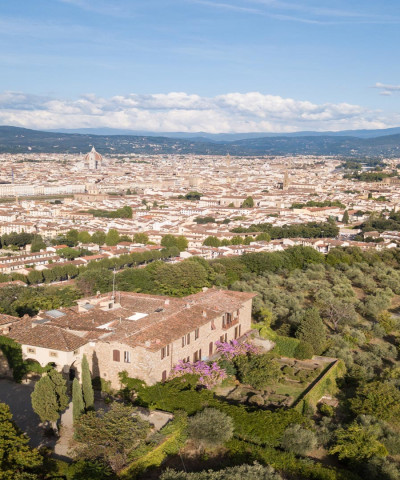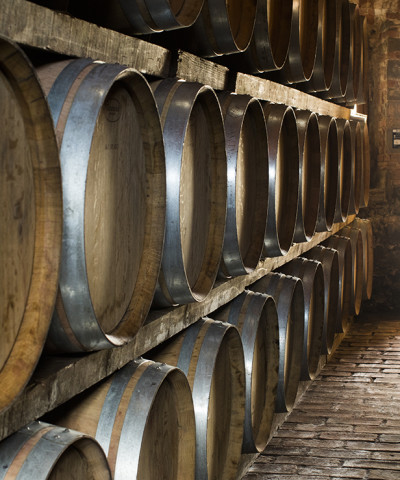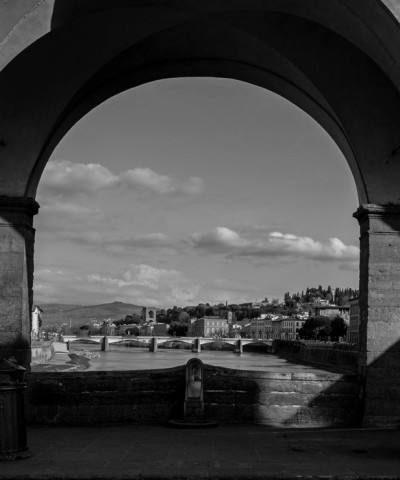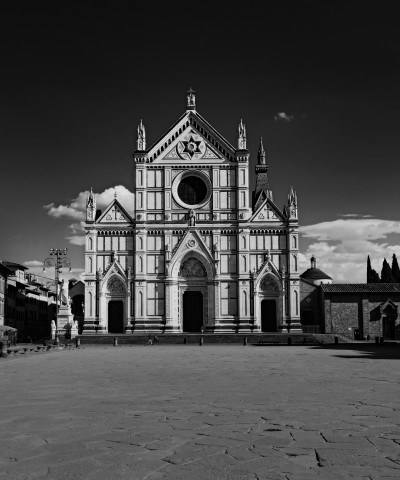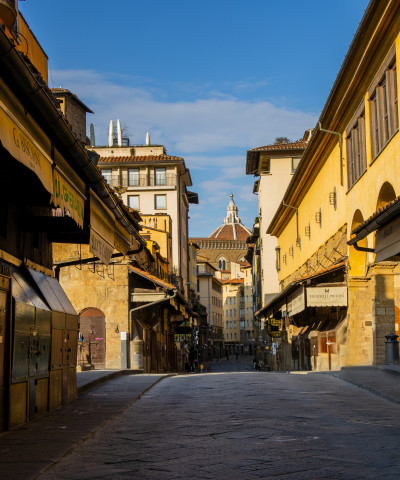The bridges of Florence
Arches on the Arno to be covered, step by step
Dino Campana described Florence’s bridges as multicolored, referring to the painted buildings that lined the Ponte Vecchio. Built upon “severe arches”, these bridges represent the linkage between the city’s millenary history and the future.
Ponte San Niccolò
Ninety meters of light and one arch only. Its “ancestors” were an iron bridge commissioned by the Grand Duke Leopoldo II and dedicated to St. Ferdinand, which was swept away eight years later, in 1844, by an exceptional flood, and a suspension bridge which was mined by the Nazis as they retreated, one hundred years later. The Bailey bridge, built by the Allies, was replaced with the current one in 1949, to the design of Riccardo Morandi.
Ponte alle Grazie
The bridge was originally called “di Rubaconte”, the name of the podestà who had it built in 1237 upon nine arches and a solidly constructed frame that withstood all great floods and surrendered only to the Nazis’ mines. The current five-span bridge was inaugurated in 1957. The painting of the Madonna alle Grazie is now kept at the Oratory at 10 Lungarno Diaz.
Ponte Vecchio
It is Florence’s oldest bridge and the only one to survive World War Two bombings (thanks to German consul Gerhard Wolf and Swiss consul Carlo Steinhauslin). First built of wood at the Arno river’s narrowest point, it was reconstructed in stone upon five piers and paved with bricks, like the city’s streets, in 1294. Swept away by the flood in 1333 (which destroyed also the statue of Mars that testified to the bridge’s Roman origin), Ponte Vecchio was rebuilt in 1345 upon three wide arches which still support it. From 1442 to 1593, the bridge was lined with butcher’s shops which threw their waste directly into the Arno river. Ferdinando I, who couldn’t stand the bad smell reaching into the Vasari Corridor, had the butchers replaced with gold merchants.
Ponte Santa Trinita
The first wooden bridge was built by the Frescobaldis in 1253 and was the city’s fourth bridge. The big 1333 flood swept it away and the second bridge, designed by Taddeo Gaddi, withstood for 200 years. It was rebuilt in 1570, designed by Bartolomeo Ammannati and Michelangelo. In 1608, the statues of the Seasons were added. The bridge was destroyed by German bombing raids, but it was rebuilt exactly “where it was and as it was” in 1957.
Ponte alla Carraia
Formerly known as Ponte Nuovo, it was built of wood (upon stone piers) and named after the nearby city gate. The bridge was damaged by the 1272 flood and the weight of the crowd watching a water show caused it to give way in 1304. Rebuilt again, it was swept away by the flood in 1333 and reconstructed by Cosimo I to the design of Ammannati, and destroyed once again by the withdrawing Nazi army. Rebuilt for the last time in 1952, it was called Ponte Gobbo (Humpbacked Bridge) because of its curved shape.
Ponte Amerigo Vespucci
Dedicated to the Florentine navigator, whose family lived in Borgo Ognissanti, it was designed in the years when Florence was capital of Italy, but it was built in 1955. The bridge connects the two river banks with its thin, flat and light arch.
Ponte della Tramvia
It is Florence’s latest bridge - 124-meter-long and builta of steel upon reinforced concrete piers- designed to allow the tramway (line 1) to cross the Arno River, but it is also open to pedestrians and cyclers.
Ponte dell’Indiano
The bridge connects the suburban areas of Peretola and Isolotto to the south of the Arno river. Built between 1972 and 1978, it is the first earth-anchored cable-stayed bridge in the world and one of Italy’s largest twentieth-century cable-stayed bridges.






